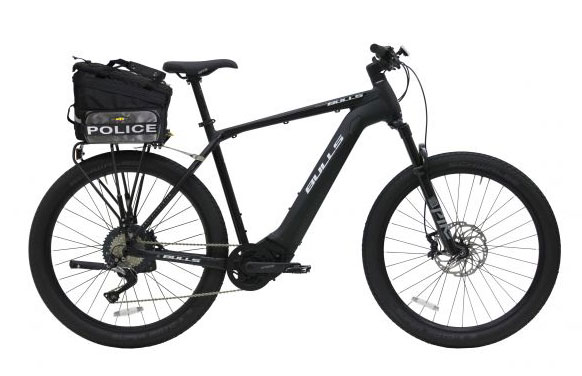The growing popularity of e-bikes has transformed urban transportation, offering an eco-friendly, affordable, and convenient alternative to traditional vehicles. However, recent reports of police confiscating e-bikes have raised concerns among riders and potential buyers. This article explores the reasons behind the confiscation of e-bikes, how regulations vary by region, and what e-bike owners need to know to avoid losing their bikes to law enforcement.
The Surge in Popularity of E-Bikes
E-bikes, short for electric bicycles, have seen a rapid rise in popularity in recent years. With their motorized assistance, they provide an effortless way to travel long distances without the physical strain of traditional cycling. Many people have adopted e-bikes for commuting, leisure, and even delivery services, making them a common sight on city streets. However, this widespread use has also attracted scrutiny, particularly from local law enforcement.
Confiscating E-Bikes: Why Are Police Taking Action?
A growing trend of confiscating e-bikes has left many owners confused and frustrated. Several factors contribute to this, including safety concerns, unregulated modifications, and non-compliance with local laws. Below, we delve into the primary reasons why police are seizing e-bikes.
1. Illegal Modifications to E-Bikes
One of the most common reasons for confiscating e-bikes is illegal modifications. While most e-bikes are designed to meet specific speed and power limitations, some riders modify their bikes to exceed these limits. In many regions, e-bikes are categorized based on their motor power and maximum speed. When owners alter their e-bikes to surpass these specifications, they may be classified as motor vehicles, subject to additional regulations such as licensing, insurance, and registration.
In such cases, law enforcement may seize the e-bikes for not adhering to legal standards. Riders caught using illegally modified e-bikes can face hefty fines, and the bikes themselves may be impounded or destroyed.
2. E-Bikes in Restricted Areas
Many cities have designated areas where e-bikes are either restricted or outright banned. This is typically done to ensure pedestrian safety in crowded areas, such as sidewalks, public parks, or pedestrian zones. Police may confiscate e-bikes if riders are found operating them in these restricted spaces. Riders must stay informed about where e-bikes are allowed to operate to avoid losing their bikes.
3. Safety Concerns and Traffic Violations
The rise in e-bike usage has also resulted in an increase in accidents and traffic violations involving these vehicles. Police often target e-bikes for confiscation when riders are caught violating traffic laws, such as running red lights, riding on the wrong side of the road, or failing to yield to pedestrians. In addition to fines, riders may lose their e-bikes if law enforcement determines that the vehicle is unsafe or the rider is posing a danger to others.
4. E-Bikes Without Proper Documentation
In some regions, particularly where e-bike laws are more stringent, riders are required to carry specific documentation, such as proof of purchase or registration, to legally operate their e-bikes. Police may confiscate e-bikes if the rider cannot produce the necessary paperwork during a routine stop or inspection. This is especially true for high-powered e-bikes that more closely resemble scooters or mopeds.
Understanding Local E-Bike Regulations
E-bike regulations vary widely depending on the region, making it crucial for riders to understand the rules in their local area. While some areas treat e-bikes similarly to traditional bicycles, others impose stricter controls, especially for more powerful models. The legal classifications of e-bikes typically fall into one of three categories:
- Class 1: Pedal-assist e-bikes with a top speed of 20 mph.
- Class 2: Throttle-powered e-bikes with a maximum speed of 20 mph.
- Class 3: Pedal-assist e-bikes with a higher speed limit of up to 28 mph.
Depending on the classification, e-bike riders may be subject to different requirements regarding helmets, insurance, registration, and age restrictions. Failing to comply with these regulations is a common reason for confiscating e-bikes.
How to Avoid E-Bike Confiscation
To avoid having your e-bike confiscated by police, it’s important to follow the rules and regulations in your area. Here are some tips:
- Ensure Compliance with Speed and Power Limits: Do not modify your e-bike beyond legal limits. Stick to the manufacturer’s specifications to avoid trouble with the law.
- Know the Legal Boundaries: Be aware of restricted areas where e-bikes are not allowed. Always stay updated on local e-bike laws to avoid riding in prohibited zones.
- Obey Traffic Laws: Treat your e-bike as you would a traditional bicycle or motor vehicle. Follow all traffic rules to avoid penalties or confiscation.
- Carry the Required Documentation: In regions where documentation is necessary, make sure you have it with you when riding your e-bike. This can include proof of purchase, registration, and insurance, depending on local laws.
- Use Safety Equipment: Wearing a helmet and ensuring your e-bike has proper lighting and reflectors can help you avoid legal trouble and improve your safety on the road.
The Future of E-Bike Regulations
As e-bikes continue to gain popularity, it is likely that regulations will become more standardized and enforced. Local governments are still grappling with how to best manage this new form of transportation while balancing safety and convenience for both riders and pedestrians. Riders should anticipate evolving laws and stay informed to avoid the risk of having their e-bikes confiscated.
Conclusion
The confiscation of e-bikes by police is often the result of non-compliance with local laws, illegal modifications, or safety concerns. As the use of e-bikes continues to grow, so too will the enforcement of regulations designed to protect riders and the public. By understanding and adhering to local e-bike laws, riders can enjoy the benefits of this innovative mode of transportation without fear of confiscation. Always ensure your e-bike is legally compliant, follow traffic laws, and ride safely to keep your e-bike on the road.











































































